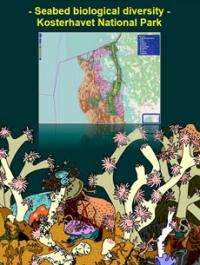Life on Kosterhavet's seabed analyzed

Kosterhavet National Park was created to provide a haven for both protected species and nature lovers. Now researchers at the University of Gothenburg have analysed species living on the seabed (benthic species) in the marine national park to determine which marine areas require special protection.
"It's not possible to survey each square meter manually in the national park. That's why I've done what experienced mushroom pickers do when they're looking for chanterelles. I've studied what the seabed should look like in order for different benthic animals to thrive, so that we can predict where certain species might be living," says Genoveva Gonzalez Mirelis at the Department of Marine Ecology at the University of Gothenburg.
2 million map tiles
To be able to predict where different kinds of benthic species are in Kosterhavet using computer models based on knowledge of deepsea and seabed conditions, Genoveva Gonzalez Mirelis began by dividing up the entire seabed in the national park into 15 x 15 metre squares. This gave her basic data comprising more than two million map tiles, which were divided up into different types of seabed.
Using a geographical information system, GIS, she then produced a map of the occurrence of nine different types of benthic communities in Kosterhavet, including communities that were dominated by deepwater corals and Norway lobster.
The method developed by Genoveva Gonzalez Mirelis can also be used to analyse other marine areas.
Basic data for marine planning
In order to preserve environments and species for future generations there are special regulations within Kosterhavet National Park, for example as regards anchorage and trawling. Good management requires a marine plan that clarifies which interests have priority in different areas, which is why different regulations are needed for each zone in the park. New legislation for marine planning is expected to come into force during 2012.
"I hope that my results can contribute towards the future management of Kosterhavet National Park, so that we can continue to enjoy Koster prawns with a clear conscience for the foreseeable future."
Provided by University of Gothenburg



















